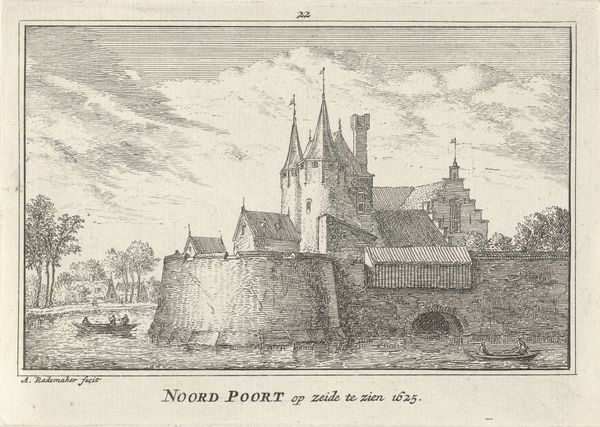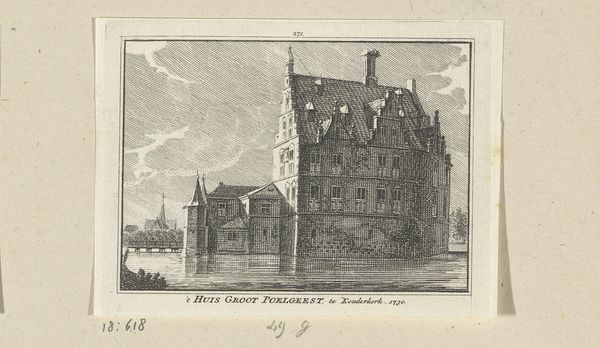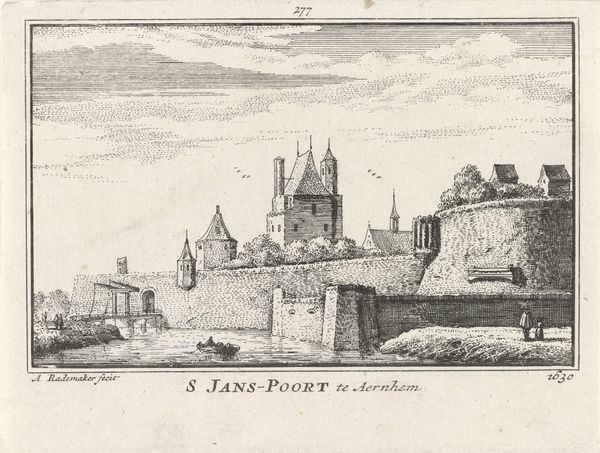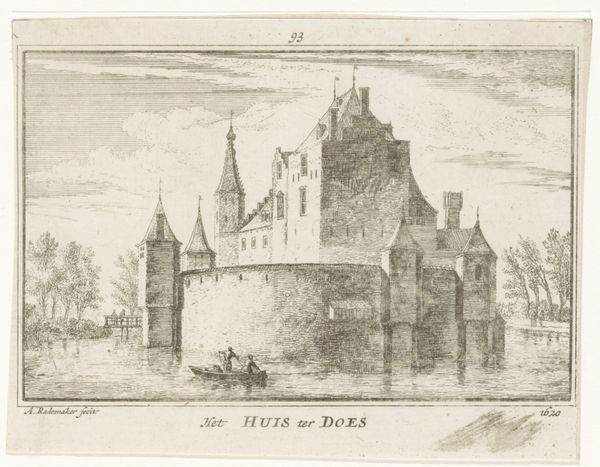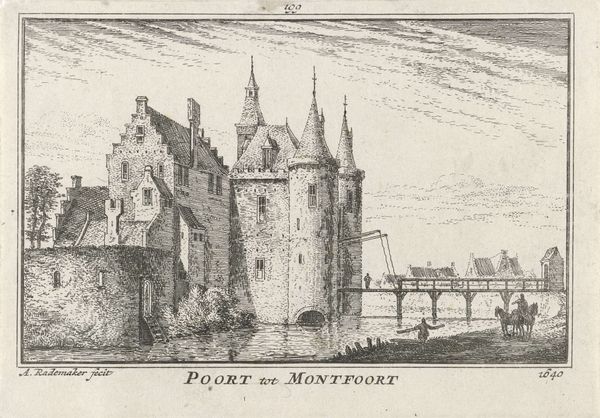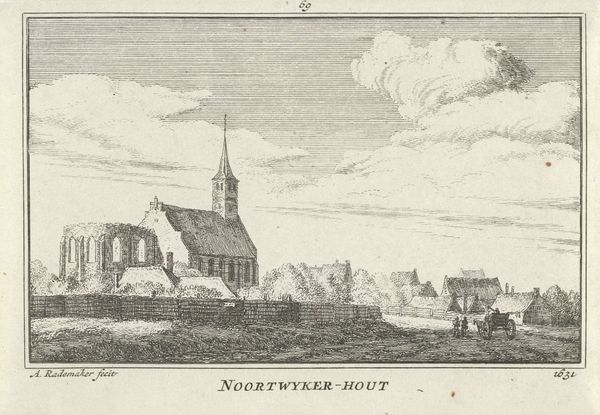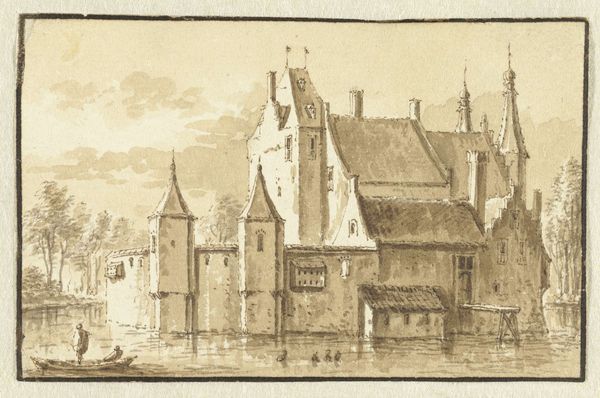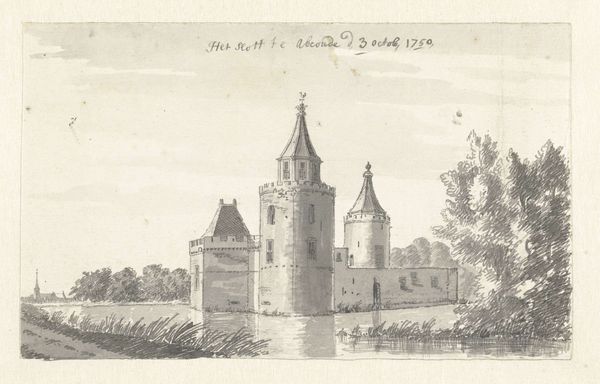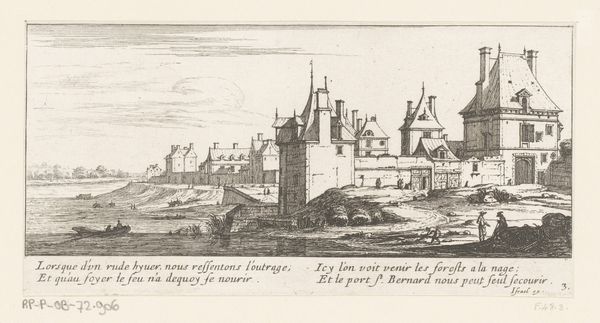
print, engraving
#
baroque
#
dutch-golden-age
# print
#
landscape
#
cityscape
#
history-painting
#
engraving
Dimensions: height 80 mm, width 115 mm
Copyright: Rijks Museum: Open Domain
Curator: The crisp lines of this engraving really catch the eye. It’s Abraham Rademaker's "View of the Noorderpoort in Hoorn, 1620," made sometime between 1727 and 1733. Editor: There’s an austere quality to it, almost stoic. It's so rigidly geometrical, and the stark contrast gives it a definite sense of… finality. Curator: Rademaker's choice of the engraving medium for a cityscape connects to the broader political landscape. Hoorn, part of the Dutch Republic, was flourishing commercially and asserting its power. Depictions of city fortifications weren't just picturesque, but were affirmations of civic pride, demonstrating their advancements. Editor: It is striking how Rademaker has arranged the lines of the brickwork to emphasize volume and structure, a sophisticated technique that also creates shadow. And did you notice the mirroring in the water? Almost perfect. Curator: Right, and reflecting on the perspective, depictions such as these reinforced the prevailing social order where viewers were implicitly positioned as being outside, perhaps excluded from the benefits enjoyed within those city walls. Think, who has access and who does not? The image could also represent anxieties, fear of invasion, of losing what they had. Editor: I'm interested in that line. The artist makes strong compositional choices; note the vertical thrust of the towers against the flat planes of the water, how that division creates stability through contrast, while, say, creating a horizon of repeated chimney stacks would be compositionally weaker. Curator: The seemingly placid surface hides underlying power dynamics; Rademaker engages with the social role of art beyond mere representation. Editor: Agreed; while a purely formal analysis illuminates Rademaker’s conscious control over the print, enriching our appreciation for the overall composition, seeing it within its historic context only amplifies it further.
Comments
No comments
Be the first to comment and join the conversation on the ultimate creative platform.
